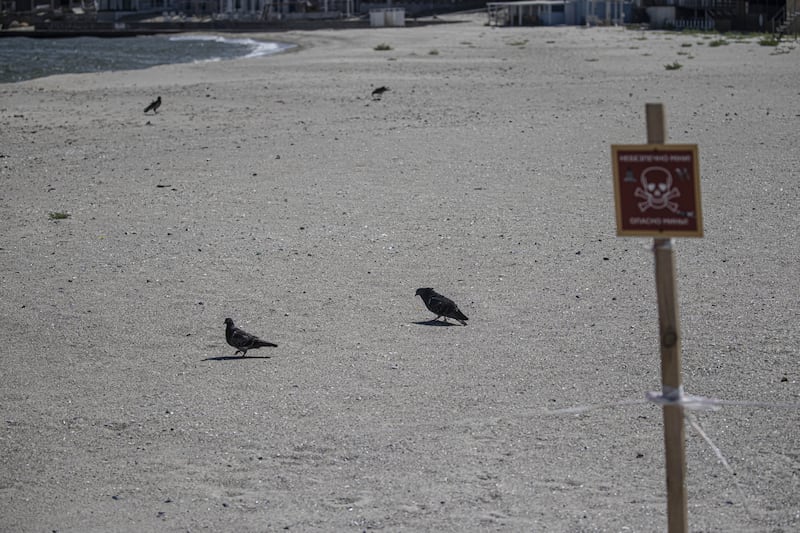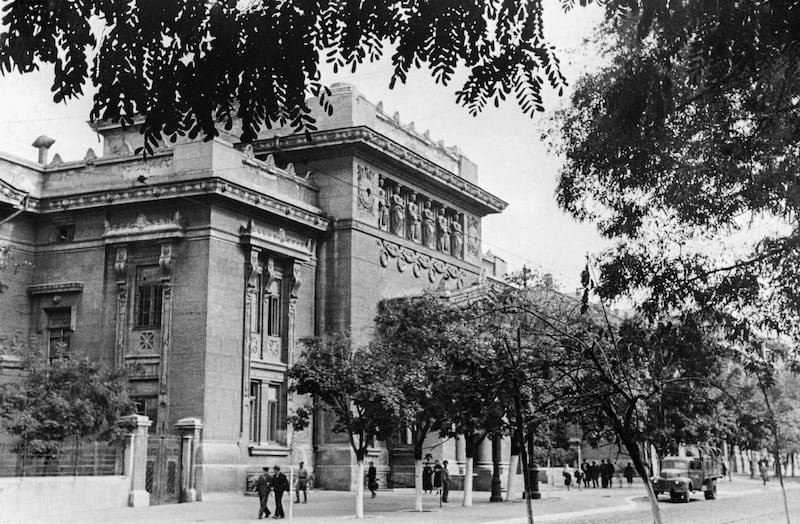Odesa always had something the Russians wanted, and which eluded them. The cosmopolitan port, with its Armenian, French, Greek, Italian, Jewish and Turkish heritage, was the pearl of the Black Sea, the farthest outpost of Moscow’s dream of planting a Russian flag in Istanbul, says Oleg Bryndak, a historian and the deputy mayor of Odesa.
Even in Soviet times, tourists from Moscow could in Odesa buy the western goods they craved. “Odesa was a smile of God, a pleasure city,” says Bryndak. “In the late 19th and early 20th centuries, it had the first soccer team, the first asphalt roads, the first running water, the first tram lines and cinema.”
[ Russian public buys into Putin’s propaganda and supports his warOpens in new window ]
When the war started on February 24th last, Odesans expected an airborne landing. Some even hoped for it. “Don’t worry, it will be quick and painless, like [the 2014 invasion of] Crimea. It will be over in a day,” a fervently anti-Russian resident of the city was told by a pro-Russian acquaintance.
Local officials sowed Odesa’s beaches with anti-infantry mines. Someone – both sides blame the other – floated anti-ship mines in the sea. Several swimmers have subsequently perished, Bryndak says. “A man found a mine with Russian writing. He thought it would take a heavy ship to detonate it, so he tried to carry it in. It exploded and killed him.”
RM Block

Russian warships have hit four vessels trying to leave Odesa port, and also sank an oil-tanker flying a Moldovan flag. “They wanted to show what would happen to anyone who runs their blockade,” Bryndak says.
The city sleeps a little easier since Denmark and the US armed Odesa with Harpoon anti-ship missiles, positioned inland on lorries. “The Harpoons would make a sea landing senseless,” Bryndak says. “But if Putin orders the generals to open another front in Odesa, they will do it, whatever the casualties.”
Even if a ceasefire or peace accord is reached, Odesans believe it is only a matter of time until Russia makes a grab for their city, because it is Ukraine’s last Black Sea port, it lies on the path to the breakaway Moldovan republic of Transnistria, and because it is Odesa.
[ Q&A: Where is Transnistria and could it become part of Ukraine war?Opens in new window ]
Odesa has seen it all before. The British and French bombarded the port during the Crimean War, in 1854. A cannon from a sunken British frigate was long ago placed as a trophy outside the town hall.
Ukraine’s Soviet era S-300 surface-to-air missile systems shoot down incoming rockets and missiles, but some still get through. A few hours before I met Bryndak at the town hall on July 16th, a Russian missile set fire to a grocery warehouse, burning 4,000sq m of goods. At the beginning of July, Russian missiles killed 21 people in the resort town of Serhiivka, 85km from Odesa. Eight people were killed in an air strike on the Tiras residential complex in Odesa on Easter weekend.
In 2014, Russia fomented what it called ‘Russian Spring’ separatist movements in the Zaporizhzhia, Kherson, Mykolaiv and Odesa oblasts or regions, as well as in Donbas. The ensemble was to have constituted a ‘Novorossiya’ crescent covering southern and eastern Ukraine. With the broader conflict this year, Moscow has targeted the same Russian-speaking areas again.
[ Odesa and Russia: ‘First they send a ballerina. Then they send a tank’Opens in new window ]

Bryndak was acting mayor of Odesa when, on May 2nd, 2014, pro-Maidan Ukrainains fought street battles with pro-Russian Ukrainians supported by the Russian consulate. The clashes ended with a fire in a trade union building where 42 pro-Russians were burned to death. Bryndak says the pro-Russians started the fire by throwing Molotov cocktails out the window at their enemies in the street below.
The street-fighting showed how divided the city was. In 2012, about 50 per cent of Odesans voted for pro-Russian political parties. When the government suspended all parties with links to Moscow in March, the pro-Russian OPZZH was still polling up to 25 per cent in Odesa.
Other evidence indicates a more significant waning of support for Moscow. In 2010, half of Odesan parents chose to send their children to Russian-language schools. This year, Bryndak says, all chose the Ukrainian language. In a poll conducted by sociologists from the University of Odesa in March, up to 96 per cent of Odesans rejected Russian claims of a “special operation”, supported President Volodymyr Zelenskiy, and wanted their country to join the EU.
“This war made impossible things possible,” Bryndak says. “For the first time since independence, Odesa is united. Putin failed to understand that more than 30 years after independence, even Russian-speakers have changed completely. The new generation has enjoyed free media, free speech and free elections. You cannot reverse that. Putin thought this was just a piece of the Soviet Union waiting to be taken back. He thought Odesa would welcome him with [the traditional Ukrainian greeting of] bread and salt. After this war, I think there will no longer be any pro-Russian parties in Ukraine.”
There is, however, ambiguity about the definition of “pro-Russian”. Fears of a treacherous Russian “fifth column” permeate Ukrainian society.
On Sunday, Zelenskiy sacked two security chiefs for failing to detect the alleged collaboration with Russia of 651 officials within their services. Odesa’s mayor, Hennadiy Trukhanov, is accused by opponents of having until recently held a Russian passport, a photocopy of which was released with the Panama Papers. Bryndak denies the charge, saying that “If [Trukhanov] had Russian citizenship, he would not have been re-elected three times.”

The town hall has tried to find middle ground in the battle over cancelling Russian culture. “Figures such as Chekhov, Pushkin, Tolstoy and Tchaikovsky belong to world heritage,” Bryndak argues. He proposes consigning monuments relating to 350 years of Russian occupation to a theme park on the colonial past, rather than destroying them.
Odesa remains a nervous, jumpy place. Streets leading down to the seafront are barricaded with sandbags. Photography is largely forbidden. Landmarks such as the staircase featured in Sergei Eisenstein’s film classic, Battlefield Potemkin, and the house of the Ephrussis, the Jewish grain merchants whose story was told in Edmund de Waal’s The Hare with Amber Eyes, are inaccessible. Because of the barricades, one must travel several kilometres to enjoy a direct view of the sea at the Nemo dolphinarium, where Odesans in swimming togs stare forlornly at the forbidden ocean.





















